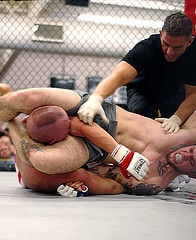If you are thinking about retiring soon, you’re undoubtedly concerned about steep market declines. Once you stop working it’s harder to ride through those ups and downs – especially if they are dramatic. My experience tells me that if you are near or in retirement the anxiety is there regardless of how well your investments are doing now.
But how would you feel if you knew about tactics that can help rescue your retirement even if the market drops like a led balloon? Pretty sweet concept eh? OK. Let’s get to work by considering an example.

Let’s say you are newly retired and, as a gift, the stock market just took 30% off your portfolio. Yowza!
What to do? Your goal isn’t to retire rich at this point. Your goal is to survive while maximizing your retirement income.
To fully understand the options, you need some background.
Smart folks have studied retirement investing for decades. They’ve tried to discover the best way to invest in order to have the most secure retirement. To make a very long story short, it turns out that if you invest 45% of your money in bonds and 55% of your money in stocks, you have a 90% chance of never running out of money. (This is not to say that you should invest you money this way, and it’s certainly no guarantee of future results. There may be better alternatives for you.). This study was done by T.Rowe Price, the Baltimore-based fund company, and was based on withdrawing 4% of your account for 30 years and giving yourself a 3% raise each year for inflation.
So, for example, if you have $100,000 in a retirement account, you’d withdraw $4,000 in the first year. In the second year, you’d withdraw $4,000 + $120 (which is 3% of $4000) for a total of $4,120, and so on. Each year your withdrawals increase.
This system works just great under normal circumstances. But if your account values drop by 30%, your 90% “success” rate plummets to 40%. In other words, if you continue taking those withdrawals after suffering huge losses, the chances of celebrating your 80th birthday at McDonald’s skyrockets — and the bad news is you’ll be serving the fries…not ordering them!
Most people understand this intellectually, but the problem is they don’t think it all the way through. They freak out and freeze up. They figure they’ll work forever or go live in a cave or do both. Don’t fall into this trap. Here are three options that change the picture entirely.
Option 1.
Delay taking your 3% cost-of-living adjustments for five years. This increases your odds of retirement success from 40% to 60%. I agree that it’s not enough, but it’s a move in the right direction.
Option 2.
Delay your 3% COLA increases and cut your withdrawals by 10%. So in the example above, if you were withdrawing $4,000 each year, cut it down to $3,600.
Option 3.
Same as Option 2 above, but rather than cut your withdrawals by 10%, give yourself a 20% reduction. If you do this, your odds of never running out of money go up to 87% — which is just about as good as they were before the whole market mess started.
Remember that each of these options only call for cuts during the first five years of retirement — not forever.
So how do you make up for that reduced income? You can cut your spending, work-part time, get a second job or some combination.
My main point is that things rarely are as bad as they look. It’s tempting to overreact — I get that. But it’s really important to examine the facts and respond accordingly. As in most other problems we all face, there are usually plenty of solutions.
This is just one example of how important it is to stay present and be open to alternatives. And most important, don’t let the fear of a great market plunge keep you from investing appropriately.
What would you do if the market dropped big time right after you retire?

Baker @ ManVsDebt says
Great article. Nothing like a good ‘ole triangle choke to get the blood pumping! Keep it up!
Neal says
Thanks Baker. That’s a good one…